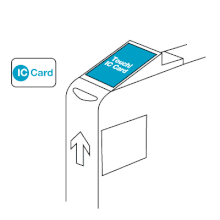Hayakaken
- Machine translation, like DeepL or Google Translate, is a useful starting point for translations, but translators must revise errors as necessary and confirm that the translation is accurate, rather than simply copy-pasting machine-translated text into the English Wikipedia.
- Consider adding a topic to this template: there are already 1,113 articles in the main category, and specifying
|topic=will aid in categorization. - Do not translate text that appears unreliable or low-quality. If possible, verify the text with references provided in the foreign-language article.
- You must provide copyright attribution in the edit summary accompanying your translation by providing an interlanguage link to the source of your translation. A model attribution edit summary is
Content in this edit is translated from the existing Japanese Wikipedia article at [[:ja:はやかけん]]; see its history for attribution. - You may also add the template
{{Translated|ja|はやかけん}}to the talk page. - For more guidance, see Wikipedia:Translation.
- Fukuoka City Subway stations

Hayakaken (はやかけん) is a rechargeable contactless smart card ticketing system for public transport in Fukuoka, Fukuoka Prefecture, Japan. Fukuoka City Transportation Bureau introduced the system on March 7, 2009. Its name derives from the words quick (速い, hayai), friendly (優しい, yasashii), comfortable (快適, kaiteki), and card (券, ken). Hayakaken (速かけん) also means "because it's quick" in the local Hakata dialect.
On March 13, 2010, Hayakaken began interoperation with Nishitetsu's nimoca, JR Kyushu's SUGOCA, and JR East's Suica smart cards.[1] In 2013, interoperation was extended country-wide, and Hayakaken became usable in all major cities across Japan as part of the Nationwide Mutual Usage Service.[2]
Design
The card features the face of Chikamaru (ちかまる), the mascot prairie dog of the Bureau. Like other electronic fare collection systems in Japan, the card uses RFID technology developed by Sony corporation known as FeliCa.[3] An alternate design was released in cooperation with All Nippon Airways.
Types of cards
- Unregistered card
- Registered card (allowing for reissue if lost)
- Commuter pass
References
- ^ JR Kyūshū (February 7, 2008). "Official news release" (Press release) (in Japanese). Archived from the original on February 11, 2008.
- ^ Ito, Etsuro (October 2013). "Launch of Nationwide Interoperable Transport System IC Cards" (PDF). East Japan Railway Culture Foundation. Japan Railway & Transport Review. pp. 6–15. Retrieved March 7, 2024.
- ^ "About FeliCa Technology". Sony. Retrieved March 7, 2024.
- v
- t
- e
| Mutual Usage | |
|---|---|
| Other cards |
|


















